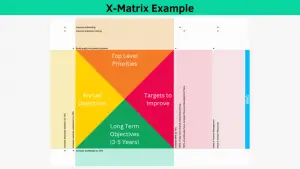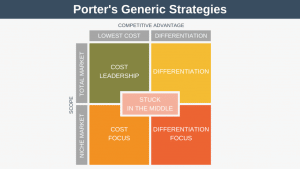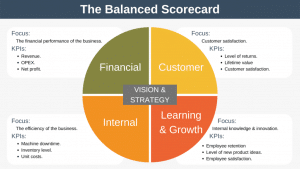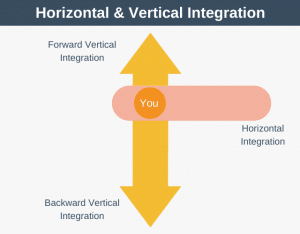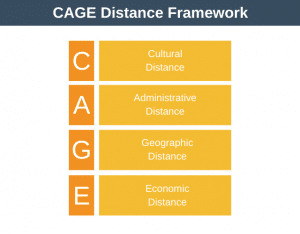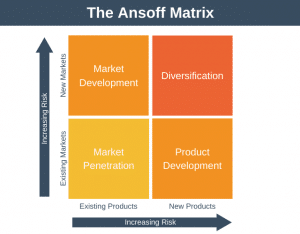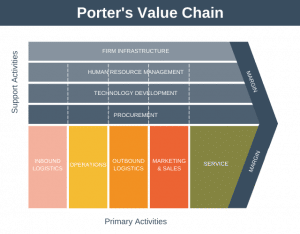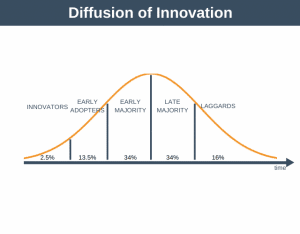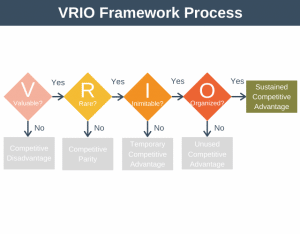A Business-Level Strategy can help your organization achieve a competitive advantage in the marketplace. They provide a way to provide value to customers by exploiting your organization’s core competencies.
This sounds complex but isn’t. When you shop for clothes which do you prefer?
- Budget clothes that do the job?
- Mid-range clothes that perhaps have a recognizable brand name?
- Haute couture? Luxury clothes from brands such as Gucci and Ermenegildo Zegna?
When it comes to buying clothes for yourself, you have many options. Competition is intense for your money. To get you to spend your hard-earned cash clothes retailers must stand out in the marketplace by differentiating themselves from the competition. One way to think about how you differentiate yourself is in terms of business-level strategies.
One retailer might seek to minimize costs, passing those savings on to you. Another might try to have a strong brand that stands for something you identify with. Another might focus on top-end luxury with no expense spared on materials combined with a luxury shopping experience.
What Are Business-Level Strategies?
Business-Level Strategies are a mechanism for a business to achieve a competitive advantage.
According to the Business-Level Strategies theory, there are two types of competitive advantage that an organization must choose between:
- Cost Leadership: ensuring you cost less than your competitors.
- Differentiation: ensuring you are different from your competitors.
There are also two types of competitive scope than an organization must choose between:
- Broad market: serving a diverse market.
- Narrow market: focusing on a niche market.
Plotting all of the above factors on to a matrix gives us five generic business-level strategies.

Note that no one generic strategy is better than another. An organization can be successful using any strategy. You need to choose the right strategy for your organization. Choosing the right generic strategy will depend on both what your competitors are doing (the external environment) and also where your strengths lie (your core competencies).
Business-Level Strategy vs. Corporate-Level Strategy
You can think of Corporate-Level Strategies as happening at a higher level than Business-Level Strategies.
Business-Level Strategies concern how an organization should compete, whereas Corporate-Level Strategies concern in what businesses an organization should compete.
Another way to say this is that business-level strategy looks at how to win within a market, and corporate level strategy looks at what markets you should be in. For example, you might be in the vitamin niche. Your corporate-level strategies will determine what niches within the vitamin market you’ll compete in, for example, cod liver oil, muscle growth, etc. Your business-level strategy will determine how you intend to win in each of these markets.
Let’s examine each of the five generic business-level strategies in turn.
1. Cost Leadership Strategy
This strategy is for organizations that want to compete for a broad customer base based on price.
A misconception about this strategy is that returns are lower. That is not the case. To maintain above-average returns and provide the lowest price, the organization must focus on internal efficiencies continually.
Common mechanisms to drive down costs include:
- Establishing rigid cost controls.
- Building state-of-the-art facilities to produce at scale at a low cost.
To be effective, this strategy requires your product or service to be standardized.
Defensive Properties
Cost leadership can help defend your business against Porter’s 5 forces:
- Rivalry: Cost leadership means you can still make a profit even after your competitors have competed away their profit.
- Suppliers: Cost leaders can absorb bigger cost increases before those costs need to be passed on.
- Buyers: In a competitive market, powerful customers can force you to sell products at a lower and lower price. However, this can force your competitors to exit the market. If this happens, then your customers lose their buying power, and you end up in a monopoly position.
- New entrants: By operating at scale and with a continuous focus on cost reduction, you create a barrier to new entrants.
- Substitutes: By selling at the lowest cost you can build loyal customers.
Cost Leadership Example
Amazon is an example of a business using a cost leadership strategy.
It focuses on attracting a large number of customers. It keeps prices low by using its vast buying power to buy products cheaply. This is then combined with no physical stores and state of the art distribution facilities to pass these savings on to consumers but still keep margins high.
Risks
- By being so focused on cost reduction, you can overlook what your customers actually want.
- Rivals may successfully copy your approach.
- New technology can result in cost reductions that eliminate your competitive advantage overnight.
2. Differentiation Strategy
This strategy is for firms that want a broad customer base based on their uniqueness. Typically, firms with this strategy will focus on building unique features to win in the marketplace. They also usually charge a higher price to their customers, to offset the cost of being unique.
Common mechanisms to differentiate include:
- Superior quality.
- Customer service.
- Design.
- Uniqueness.
Defensive Properties
Differentiation can help defend your business against Porter’s 5 forces:
- Rivalry: Brand loyalty and uniqueness can prevent competitors from taking your market share.
- Suppliers: Your higher price means you are better able to absorb cost increases.
- Buyers: Powerful buyers have limited scope to force price reductions because they can’t get what you offer elsewhere.
- New entrants: Brand loyalty and uniqueness stops customers from switching to new entrants.
- Substitutes: Brand loyalty and uniqueness prevents customers from switching to alternatives.
Differentiation Strategy Example
Apple is an example of a firm operating a differentiation strategy to sell its laptops to a broad market. Their unique design and engineering allow them to stand out in the marketplace.
This enables them not only to charge a premium price but also to combat competitors.
Risks
- Your customers might decide that your uniqueness isn’t worth your higher price.
- Competitors could imitate some of your unique features, causing you to lose some of your uniqueness.
3. Focused Cost Leadership Strategy
These organizations compete on price but also stand out because they focus on serving a niche market.
Common mechanisms to adopt a focused cost leadership strategy include:
- Focusing on serving a small group of customers.
- By understanding the needs of your smaller target market, you can uniquely cut costs to serve the needs of that market.
Defensive Properties
Focused cost leadership can help defend your business against Porter’s five forces in the same way that broad cost leadership can.
Focused Cost Leadership Example
Checkers is a US-based fast-food company that operates on a drive-in only basis. It saves money versus its competitors because it doesn’t offer customers anywhere to sit, and its buildings are cheaper to construct. Checkers targets the cheaper end of the market. However, despite this, Checkers can still achieve high-margins because it has lower overheads.
Risks
- Your niche might be targeted by broad market firms with more significant economies of scale.
- Your competitors might subdivide your niche into smaller niches.
4. Focused Differentiation Strategy
This strategy is very similar to that of a differentiation strategy except that it is focused on a very narrow segment of the market. These firms compete by offering unique features to a small market segment.
Common mechanisms to focus include:
- Select a profitable narrow subset of the market.
- Focus on areas where competition is weakest.
- Focus on a segment where product substitution is difficult.
Defensive Properties
Businesses using a focused differentiation strategy can defend themselves against Porter’s 5 Forces in the same way as businesses using a broad differentiation strategy.
Focused Differentiation Example
Rolls Royce cars is an example of a company using a focused differentiation strategy. Their cars are synonymous with prestige, quality, and engineering excellence. They are premium priced and focussed on a tiny subset of the global car market.
Risks
- Your niche might be targeted by broad market firms with bigger economies of scale.
- Your competitors might subdivide your niche into smaller niches.
5. Integrated Cost Leadership/Differentiation Strategy
This strategy involves producing low-cost products with differentiated features. This strategy is about simultaneously focusing on two drivers of competitive advantage: cost and differentiation. This type of strategy is often called a hybrid strategy.
To understand the appeal of a hybrid strategy, realize that a mid-priced product that distinguishes itself in some way can be more appealing to customers than a cheap generic product.
This can be a high-risk strategy because you must invest in both reducing costs (through automation, etc.) and also invest in differentiating your product.
Integrated Cost Leadership/Differentiation Example
IKEA is a great example of a business with an integrated cost leadership and differentiation strategy. It sells unique products that you can’t get elsewhere. It invests in its own designers to achieve this. It also sells it’s products at a low price. It invests in automation and logistics to do this.
A less obvious example of a business using an integrated cost leadership and differentiation strategy is Southwest Airlines.
Southwest Airlines provides cost leadership by:
- Only using a single model of aircraft (Boeing 737).
- Using cheaper minor airports.
- Not providing meals.
- Having a short 25 minute turnaround time.
It provides a level of differentiation by:
- Focusing on customer satisfaction.
- Trying to make the experience of flying fun.
Risks
- The firm may find itself “stuck in the middle.” This is where a firms product isn’t cheap enough to compete with competitors and nor is it differentiated sufficiently.
- It can be challenging to reduce costs at the same time as increasing differentiation.
Whatever strategy you choose to adopt, you will need to configure your value chain to support the approach chosen.
In the diagram below you can see all our examples mapped to the previous diagram.

Summary
Business-Level Strategy theory states that there are essentially three strategies you as an organization can use to win in the marketplace: cost leadership, focus, or differentiation.
Which one you choose with depend on market conditions and your unique set of core competencies.
Cost leadership aims to increase market share by focusing on producing at low cost. Focus looks to dominate a small market segment by exclusively focusing on serving that segment (you can always add new segments later). Finally, differentiation aims to grow market share by concentrating my making your product or service different and unique.
